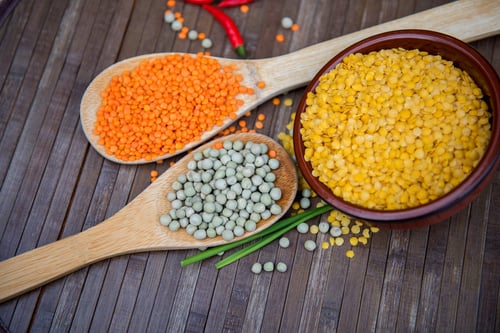 One of the principal domesticated crops going back to 10,000 BC, pulses are among the world's most trusted food crops and have played a crucial role in sustaining human societies worldwide.
One of the principal domesticated crops going back to 10,000 BC, pulses are among the world's most trusted food crops and have played a crucial role in sustaining human societies worldwide.
In present-day Thailand, archeologists have found peas in caves that date back more than 11,000 years. Lentils accompanied Ancient Egyptian royalty on their journey into the afterlife. And the Roman names for peas, lentils, and chickpeas were the inspiration for Piso, Lentulus, and Cicero, three famous families in Italy during the period of the Roman Empire.
Despite their role in sustaining civilizations throughout history, you might elicit some blank faces if you asked somebody what pulses were. That's why we have put together this quick guide on what you need to know about this wonder crop.
What are pulses?
Pulses are the dry seeds of plants from the pea family. The United Nations Food and Agricultural Organization define pulses as being farmed solely for their dry grain, rather than for any vegetables harvested when green.
Chickpeas, lentils, and dried beans are the most common types of pulses, but all the different kinds of beans (kidney, yellow, pinto, navy) are considered only one pulse type. Did you know that the peanut is a pulse too? Even though it is called groundnut, it is technically a pea! Generally, peanuts are not considered a pulse as they are high in fat, unlike lentils and chickpeas.
Where are they grown?
Pulse crops are cool-season crops and can grow well in dry regions where rainfall is hard to come by. They are a significant feature of the western U.S. dry farmlands. The Northern Plains (including our home state of Montana), and the Palouse (which includes eastern Washington, northern Idaho, and northeastern Oregon) are the two main growing areas in the U.S.
When are they grown?
Pulses are best cultivated after a cereal crop such as winter wheat or spring barley. Usually, planting is done in April and May, and the harvest typically starts in August and is carried out through September. When harvested, dry peas, lentils, and chickpeas can be stored safely for three to four years.
Good for the environment
Aside from being good for you, legumes are also among the most sustainable food crops we can grow.
- Low-water: Within the agricultural process, pulses use a tenth of the water of other protein sources.
- Fewer greenhouse gases: Compared with other crops, legumes emit up to seven times less greenhouse gas emissions per area.
- Nitrogen-independent: Legumes can turn nitrogen in the air into a nutrient to help it grow. Therefore, growing more legumes reduces worldwide demand for nitrogen fertilizers, improving annual cropping systems' environmental sustainability for the long haul.
- Higher soil carbon accumulation: Many pulses encourage higher soil carbon accumulation rates than cereals or grasses. For this reason, they have been used in intercropping by farmers for centuries.
Pulses stimulate a healthy flow of giving and taking throughout their life cycle, be it as an agent for biochemical nitrogen conversion or as a reliable way to address the increasing human population's requirement for sustainable protein sources.
Check out our next post for everything you need to know about eating pulses.
